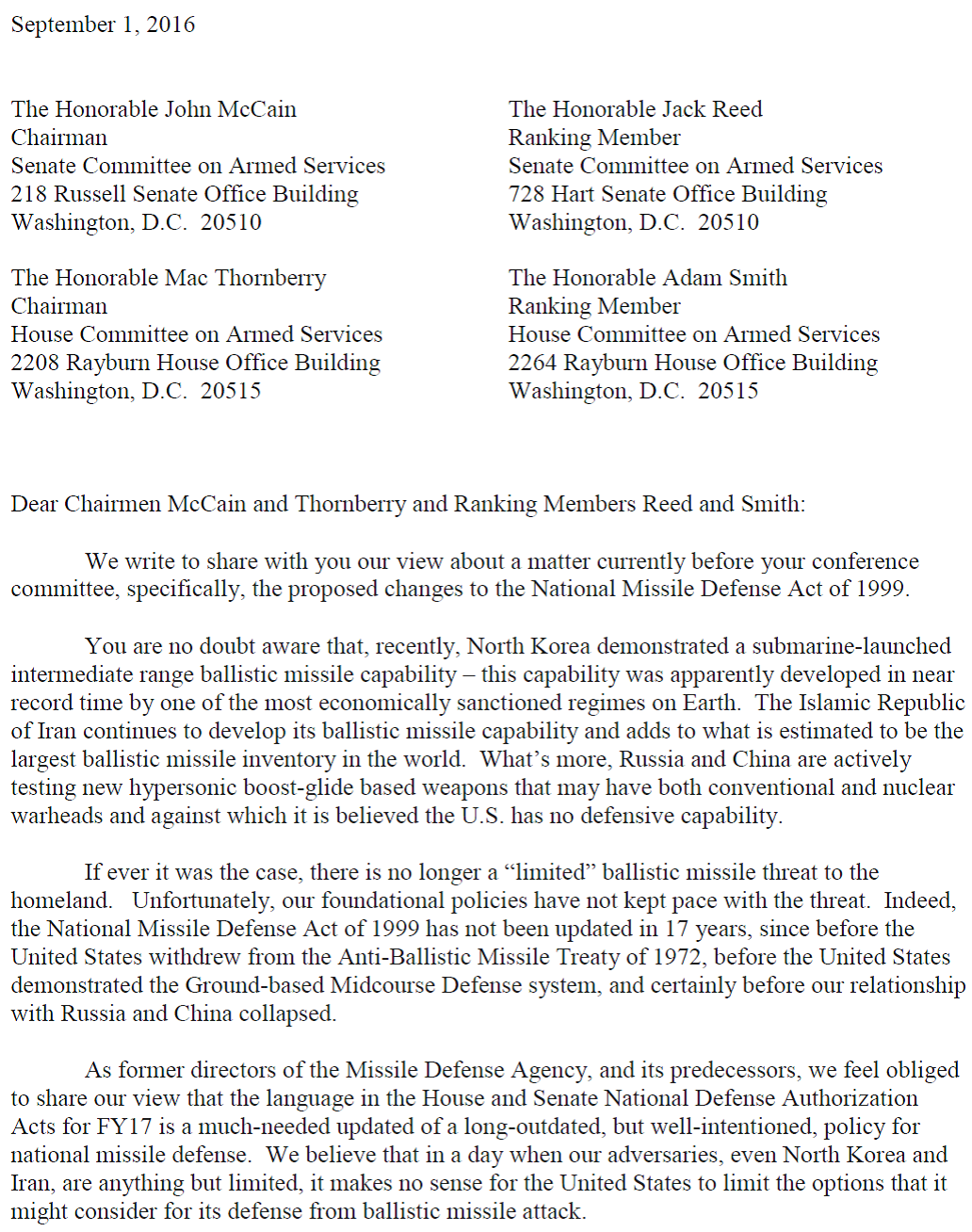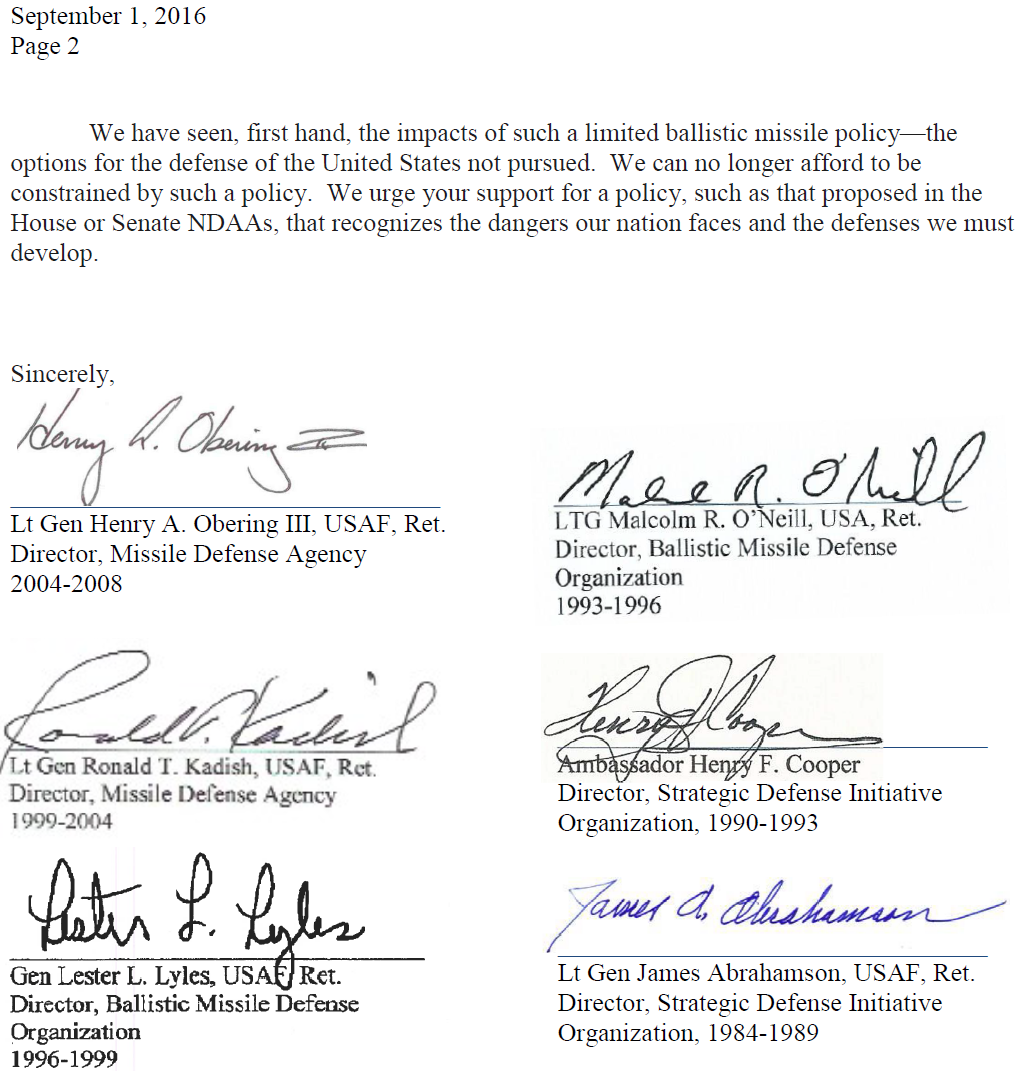“Wouldn’t it be better to save lives than to avenge them? Are we not capable of demonstrating our peaceful intentions by applying all our abilities and our ingenuity to achieving a truly lasting stability? I think we are. Indeed, we must. After careful consultation with my advisers, including the Joint Chiefs of Staff, I believe there is a way.” Ronald Reagan, March 23, 1983
Last week, I wrote about the need to build truly effective ballistic missile defense (BMD) system (Click here.), building my case on the excellent Space News article by Rebeccah Heinrichs (Click here.) — which was derived from an important Hudson Institute study (Click here.) that she led. Again, my summary of the key points from both of her efforts follow:
- The debate about whether “space is weaponized” is over — and adversaries are exploiting U.S. vulnerabilities.
- Antisatellite (ASAT) systems, particularly direct ascent ASATs, threaten our space systems that are important to our military operations and critical civil infrastructure (e.g., the electric power grid, communications, transportation, etc.) — and those of our allies.
- Hypersonic missiles being developed can defeat our existing ballistic missile defense (BMD) systems.
- The list of adversaries and associated capabilities is growing (e.g., North Korea and Iran are gaining “greater ranges, mobility, increased accuracy and the technical ability to use more challenging counter-measures, all while amassing great numbers of missiles to enable salvo launches.” And both have successfully launched satellites into space.)
- For many years such threatening space systems were both beyond the capability and reach of potential U.S. adversaries. No longer . . . and our adversaries recognize the asymmetric nature of U.S. space dominance together with space assets’ fragility and vulnerability to attack, and are taking advantage of this U.S. Achilles’ heel by developing weapons to target our space assets.
- Our space defense posture is primarily passive and reactive, an anachronism of the Cold War era during which we had a single superpower adversary and the uneasy deterrence construct relying on the Mutual Assured Destruction (MAD) doctrine. The Pentagon has begun to build needed resiliency into our space architectures and is requesting funds from Congress provide to improve space situational awareness — but we cannot prevail in space merely by passively defending against hostile force; we must have active defenses as well.
- The most effective, and currently missing, way to meet these needs is “to deploy a satellite constellation in space that provides sensor coverage as well as a kinetic kill capability.”
- Notably, we know such a space-based interceptor (SBI) system is “affordable” and development efforts should begin immediately.
My only quibble was with a detail of her case. Based on the Brilliant Pebbles program of the Strategic Defense Initiative (SDI) era from 1983 through 1992, the cost of a truly effective space-based BMD system should be even less than the estimates she quoted from a 2011 Institute of Defense Analysis (IDA) study.
As the first SDI Director and I wrote (Click here.) for the 30th anniversary of President Ronald Reagan’s March 23, 1983 speech that launched the SDI, Brilliant Pebbles was the most cost-effective BMD system concept of that SDI era that ended with my watch as the third SDI Director, on January 20, 1993 and the advent of the Clinton administration which “took the stars of Star Wars.” As I always point out, the second SDI Director, Lt. General George Monahan, would surely have joined us were he still living — he led SDI through the gauntlet of the 1991 Defense Acquisition Board (DAB) review that approved Brilliant Pebbles to become a formal Demonstration and Validation (DemVal) program.
The associated comprehensive cost estimate for research, development, deployment and 20-years operations was $10 billion in 1988 dollars, or about $20 billion in 2016 dollars for a constellation of 1000 Brilliant Pebbles, each of which would be replaced once. Costs today should be less, because the technology has advanced in the past quarter century. And that system would be much more capable than the space based interceptor system considered by IDA.
This week, I want to call your attention to the following important letter signed by six former Directors of the Missile Defense Agency or its predecessor organizations, since the advent of the SDI. We too pointed to the requirements for truly effective BMD systems to deal with the current and future threat ballistic missiles that could hold the nation at risk by overwhelming the capabilities of the current BMD systems. And we note that the Missile Defense Act of 1999 needs to be updated to deal with that reality.
In 1999, we were still bound by the politics of the time, imbedded in legislation demanding that any BMD system that we deployed to defend the U.S. homeland had to be consistent with the Antiballistic Missile (ABM) Treaty. Consequently, that constraint precluded the development, testing and deployment of all except fixed land-based ABM systems.
After the 1991 Gulf War, the debate over whether to build theater missile defense (TMD) systems ended and after ending major political impedance, we finally, as a top priority, began to develop, test and deploy mobile TMD systems, including the sea-based Aegis BMD system, which has become the most cost-effective BMD system deployed today.
But both Democrat and Republican administrations have since artificially constrained the inherent Aegis BMD capability to defend the U.S. homeland, a legacy of the era that sharply limited homeland defenses in general. The 1999 act constrained development, testing and deployment of homeland defenses to a very limited ground-based interceptor system to be consistent with the ABM Treaty. Even after President George W. Bush withdrew from the ABM Treaty, administration imposed constraints continued to preclude fully exploiting Aegis BMD system capabilities. So far as I know, this incomprehensible condition remains in place today.
The Missile Defense Act of 1999 stated that “It is the policy of the United States to deploy as soon as is technologically possible an effective National Missile Defense system capable of defending the territory of the United States against limited ballistic missile attack (whether accidental, unauthorized, or deliberate) with funding subject to the annual authorization of appropriations and the annual appropriation of funds for National Missile Defense.” (Click here.)
Moreover, the Act called for continuing negotiations with Russia to reduce their nuclear arms, then understood to require BMD systems to comply with the ABM Treaty — as negotiations continued, the results seem to have constrained U.S. strategic programs more than Russia’s. And the Act’s emphasis on “limited” attacks has also led to a focus on restraining the design and development of our BMD systems to have “limited” capabilities, which in turn has precluded efforts on truly cost-effective BMD systems. This onerous constraint has continued, and even though President Bush withdrew from the ABM Treaty in 2002, little has been done to return to the most cost-effective BMD systems pioneered during the SDI era.
Thus, I joined five previous Directors of the U.S. efforts to develop BMD systems in signing the following letter to the Chairmen and Ranking Members of the Senate and House Authorization Committees, encouraging a key change that could end this trend. Hopefully, the National Defense Authorization Act for 2017 Conference beginning this week will take our concerns into account in its consideration of a related House Authorizers’ initiative. If they do, they will be taking an important step in enabling the development of truly cost-effective defenses — which in my opinion would involve greater investment in both fully exploiting sea-based and space-based BMD systems.
I know we can build a much more capable SBI system for much less than currently considered viable. We knew how over a quarter century ago — and those efforts were scuttled by the Clinton administration. In particular, such an effort had been fully approved 26 years ago, after a very detailed review, as reported by SDI Historian Donald Baucom in his “Rise and Fall of Brilliant Pebbles.” Click here for this important history lesson.
Our purpose then was precisely what is needed today — to provide global protection against ballistic missiles launched from anywhere on Earth against any other place more than a few hundred miles away. On my watch as SDI Director, we called it Global Protection Against Limited Strikes (GPALS) and designed it to have very high probability of against up to 200 attacking ballistic missiles launched from anywhere. Click here for a still pertinent 1992 Report to Congress describing the impressive global benefits of this GPALS system.
I have dealt with the issues surrounding these past events several times in some depth, most recently in my “trilogy” messages leading up to the 33rd anniversary of Reagan’s SDI speech—click here, here, and here for my March 8th, 15th and 22nd messages. Hopefully, Ms. Heinrichs’ Space News article and associated Hudson Institute study can open the public debate and positively influence the policies of the next administration.
We should again release the constraints on the U.S. technical community to defend against all attacks, not just limited ones!
Reagan was right to seek to protect Americans rather than to avenge them. We should return to his SDI vision and challenge to the scientific community.
What can you do?
Join us in praying for our nation, and for a rebirth of the freedom sought, achieved and passed to us by those who came before us.
Help us to spread our message to the grass roots and to encourage all “powers that be” to provide for the common defense as they are sworn to do.
Begin by passing this message to your friends and suggest they visit our webpage www.highfrontier.org for more information. Also, please encourage your sphere of influence to sign up for our weekly e-newsletter.
Encourage them to review our past email messages, posted on www.highfrontier.org, to learn about many details related to the existential manmade and natural EMP threats and how we can protect America against them.
Click here to make a tax deductible gift. If you prefer to mail a check, Please send it to 500 North Washington Street, Alexandria, VA 22314.
E-Mail Message 160906
Please click here to read Past Weekly Updates!
Please help High Frontier continue this important and timely work!
Be sure to follow us on our Social Sites!
If you found this letter via our Social Sites, and you would like to subscribe, please click below!







